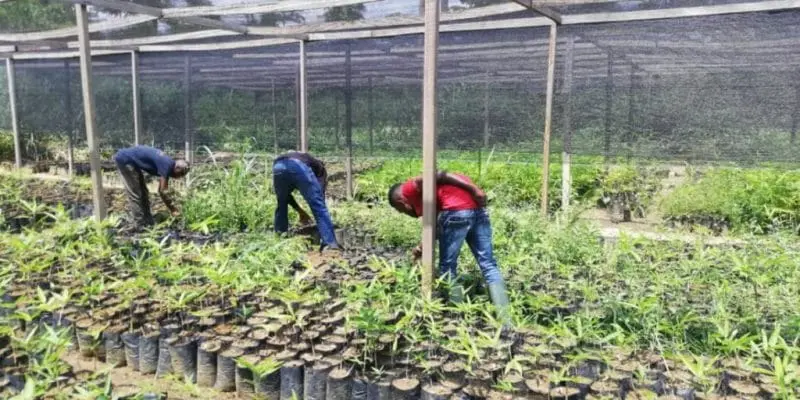This story excerpt was translated from French. To read the original story in full, visit Afrik 21. You may also view the original story on the Rainforest Journalism Fund website here. Our website is available in English, Spanish, bahasa Indonesia, French, and Portuguese.

At the first-ever African Bamboo and Rattan Congress held April 20-22 in Yaoundé, Cameroon's Ministry of Environment, Nature Protection and Sustainable Development presented a bamboo development project to restore degraded landscapes, conserve biodiversity, sustainably manage land and improve community livelihoods. The Restoration of Degraded Landscapes (RLS) project implemented by the International Union for Conservation of Nature (IUCN) with the contribution of the Global Environment Facility (GEF) aims to restore a total area of 6,000 hectares, ensure improved sustainable management of an additional 6,000 hectares and reduce emissions of 384,218 tons of CO2 equivalent.
To implement this project, the non-governmental organization (NGO) Forests and Rural Development (Foder) is providing the seedlings. Two nurseries with 30,000 plants have been set up, including 10,000 plants in Akomnyada, a locality located more than 41 km from the capital Yaoundé, and 20,000 plants on the site of the National Forestry Development Support Agency (Anafor) in Mbalmayo in the central region.

As a nonprofit journalism organization, we depend on your support to fund journalism covering underreported issues around the world. Donate any amount today to become a Pulitzer Center Champion and receive exclusive benefits!
Through the use of bamboo, Cameroon wants to accelerate the achievement of the 13th Sustainable Development Goal (SDG 13) on "measures to combat climate change." The idea is to restore degraded lands and landscapes, sequester CO2 and improve water table management in degraded landscapes. According to experts, the choice of bamboo is justified more by its ability to sequester CO2 and adapt to the soil level.








